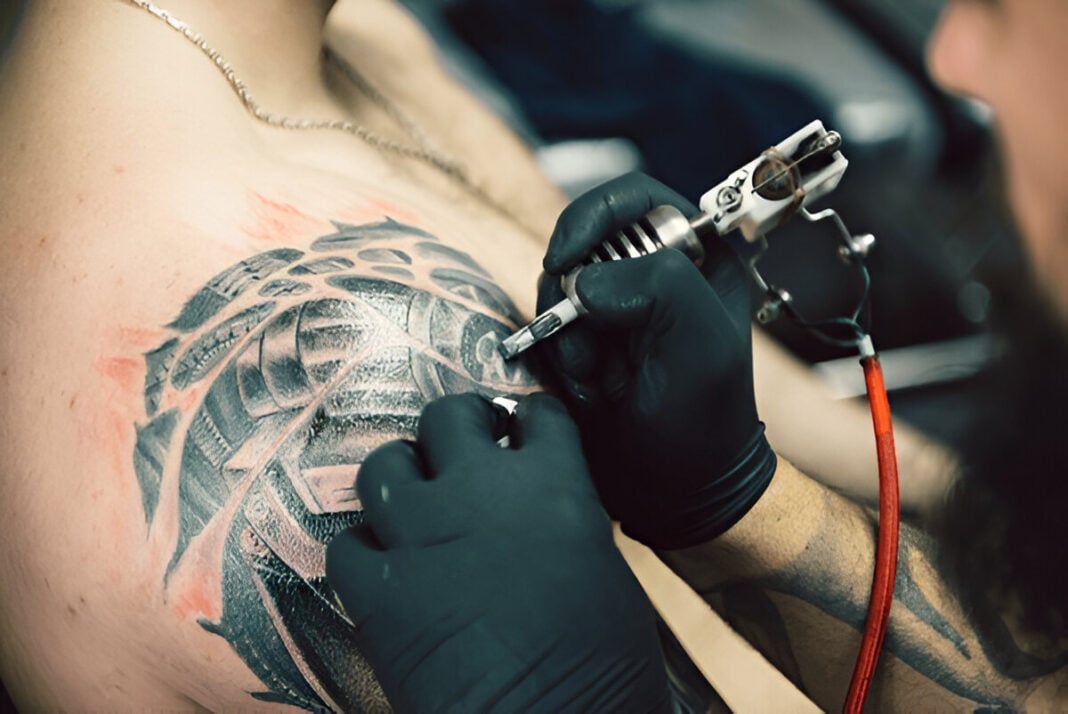In today’s world, tattoos have transitioned from taboo to trendy. From commemorating life events to celebrating personal identity, body art has become a mainstream expression across all demographics. However, this rising trend also brings with it a spectrum of dermatologic concerns. Tattoos and skin disease intersect in ways that demand awareness, vigilance, and proactive care from dermatologists. While the aesthetic appeal is undeniable, the health risks, including allergic reactions, granulomatous disorders like sarcoidosis, and infections, should not be overlooked.
Allergic Reactions: More Than Just a Rash
Allergic responses to tattoo pigments, particularly red ink, are some of the most frequently reported complications. Patients may present with persistent itching, swelling, redness, or raised plaques localized to the tattooed area, sometimes years after the tattoo was applied (Serup et al., 2015). The red ink, which often contains mercury sulfide (cinnabar), is notorious for causing delayed-type hypersensitivity reactions. However, green, blue, and yellow pigments have also been implicated.
In clinical practice, these reactions can be misdiagnosed as contact dermatitis, but tattoo-related allergies often behave more like fixed drug eruptions or lichenoid dermatitis. Biopsies usually reveal a lymphohistiocytic infiltrate and pigment granules. Unlike typical allergic dermatitis, these reactions may not respond well to corticosteroids or antihistamines and sometimes require surgical excision of the tattooed skin.
For dermatologists, distinguishing between an allergic reaction and an infectious or granulomatous process is essential. Patch testing with ink samples or related pigments may offer clues, but it is not standardized and can be unreliable (Jacob et al., 2020).
Sarcoidosis and Tattoo Granulomas
Sarcoidosis is a systemic granulomatous disease that can be triggered or localized within tattoos. Tattoo-induced sarcoidosis typically presents as red-brown papules or plaques that erupt over previously quiet tattoo lines. In many cases, this cutaneous reaction is a visible marker of underlying systemic involvement, including pulmonary or ocular sarcoidosis (Kumarasinghe et al., 2016).
Tattoo pigments, particularly black and blue, may contain carbon-based nanoparticles that act as foreign bodies, leading to granulomatous inflammation. Biopsy remains the gold standard for diagnosis and typically reveals non-caseating granulomas with pigment deposits. If sarcoidosis is suspected, further systemic work-up is warranted, including chest radiographs, serum ACE levels, and ophthalmologic evaluation.
Some tattoo granulomas may occur independently of systemic sarcoidosis and mimic conditions like lupus vulgaris or foreign body granulomas. Dermatologists must maintain a high index of suspicion and refer for multisystem evaluation when necessary.
Infections: From Local to Life-Threatening
Skin infections are among the most immediate and serious risks following tattooing. Bacterial infections, particularly those caused by Staphylococcus aureus or Streptococcus pyogenes, may appear within days of tattoo application. Inappropriate hygiene practices at tattoo parlors, unsterile equipment, or patient neglect of aftercare instructions can all contribute to localized cellulitis or abscess formation.
More concerning are atypical infections from Mycobacterium chelonae and M. abscessus, both rapidly growing nontuberculous mycobacteria. These organisms can cause nodular or ulcerative skin lesions that persist for weeks and often require long courses of antibiotics (Kennedy et al., 2012). Viral infections, such as hepatitis B, hepatitis C, and HIV, remain a risk, especially with non-regulated tattooing in informal or unlicensed settings.
Fungal infections, though less common, have also been reported. Dermatologists should consider these diagnoses in persistent or atypical skin lesions within tattoos, especially when they are not responding to conventional treatment.
Patient Counseling and Prevention
Given the potential for adverse events, dermatologists should proactively counsel patients, especially those with pre-existing skin conditions like eczema, psoriasis, or lupus, on the risks of tattooing. These individuals may be more prone to Koebnerization, where trauma, such as a tattoo needle, can trigger a new lesion at the tattoo site.
Patients should be advised to choose reputable tattoo parlors that adhere to stringent hygiene and sterilization standards. Pre-tattoo skin assessments, especially for individuals with autoimmune or allergic histories, may reduce complication risk. Aftercare should be emphasized, including the importance of keeping the area clean, avoiding picking or scratching, and recognizing early signs of infection.
For patients presenting with tattoo-related complications, dermatologists must take a thorough history, including timing, ink color, and tattoo location. Biopsy should be performed for suspicious lesions. Multidisciplinary referrals are often warranted in cases of suspected systemic involvement.
Tattoos are no longer a fringe phenomenon. They are mainstream, artistic, and personal. However, tattoos and skin disease are intricately linked in ways that dermatologists must recognize. From allergic reactions to sarcoidosis to opportunistic infections, the dermatologic fallout from tattoos can be both challenging and clinically significant. As body art continues to grow in popularity, the role of the dermatologist will increasingly extend beyond aesthetics to encompass education, prevention, and management of tattoo-related skin diseases.
References
- Jacob, S. E., Van Voorhees, A. S., & Ehrlich, A. (2020). Tattoo-associated allergic reactions: Identification, management, and prevention. Journal of the American Academy of Dermatology, 82(6), 1427–1435. https://doi.org/10.1016/j.jaad.2019.11.026
- Kennedy, B. S., Bedard, B., Younge, M., Tuttle, D., Ammerman, E., Ricci, J., … & Arduino, M. J. (2012). Outbreak of Mycobacterium chelonae infection associated with tattoo ink. New England Journal of Medicine, 367(11), 1020–1024. https://doi.org/10.1056/NEJMoa1205114
- Kumarasinghe, S. P. W., Basnayake, T. B. S., & Jayasinghe, R. D. (2016). Sarcoidal granulomas on tattoos may indicate systemic sarcoidosis. Australasian Journal of Dermatology, 57(4), 309–314. https://doi.org/10.1111/ajd.12445
- Serup, J., Bäumler, W., & Kluger, N. (2015). Tattooed Skin and Health: More than Skin Deep. Springer.












